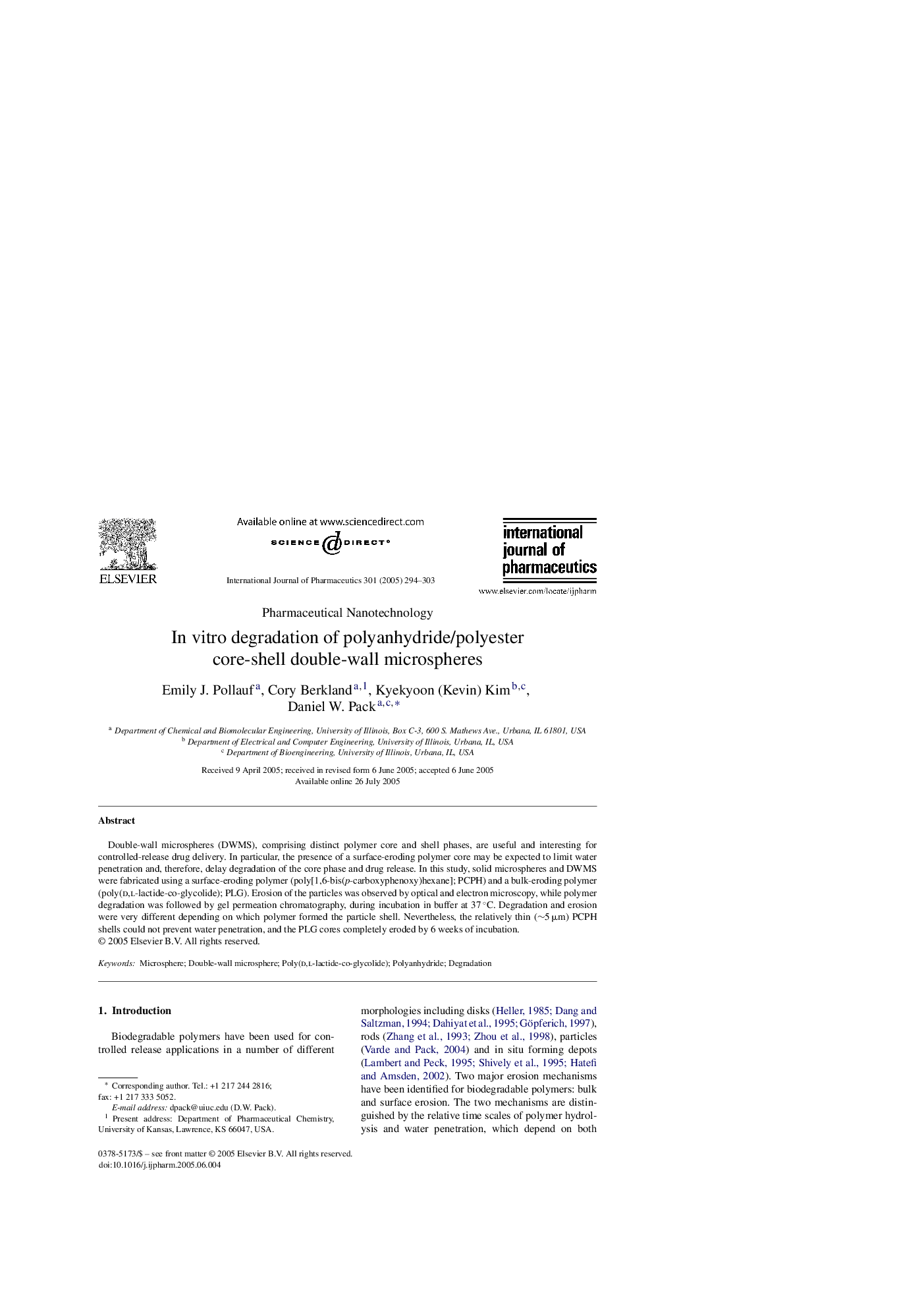| Article ID | Journal | Published Year | Pages | File Type |
|---|---|---|---|---|
| 9918670 | International Journal of Pharmaceutics | 2005 | 10 Pages |
Abstract
Double-wall microspheres (DWMS), comprising distinct polymer core and shell phases, are useful and interesting for controlled-release drug delivery. In particular, the presence of a surface-eroding polymer core may be expected to limit water penetration and, therefore, delay degradation of the core phase and drug release. In this study, solid microspheres and DWMS were fabricated using a surface-eroding polymer (poly[1,6-bis(p-carboxyphenoxy)hexane]; PCPH) and a bulk-eroding polymer (poly(d,l-lactide-co-glycolide); PLG). Erosion of the particles was observed by optical and electron microscopy, while polymer degradation was followed by gel permeation chromatography, during incubation in buffer at 37 °C. Degradation and erosion were very different depending on which polymer formed the particle shell. Nevertheless, the relatively thin (â¼5 μm) PCPH shells could not prevent water penetration, and the PLG cores completely eroded by 6 weeks of incubation.
Related Topics
Health Sciences
Pharmacology, Toxicology and Pharmaceutical Science
Pharmaceutical Science
Authors
Emily J. Pollauf, Cory Berkland, Kyekyoon (Kevin) Kim, Daniel W. Pack,
